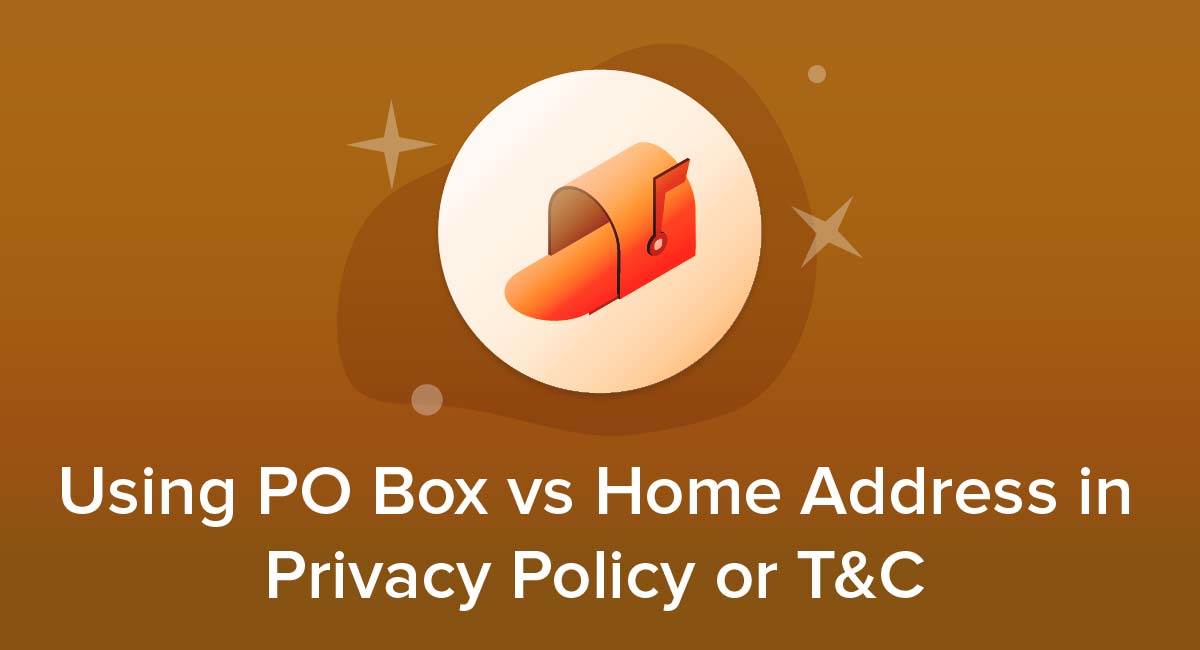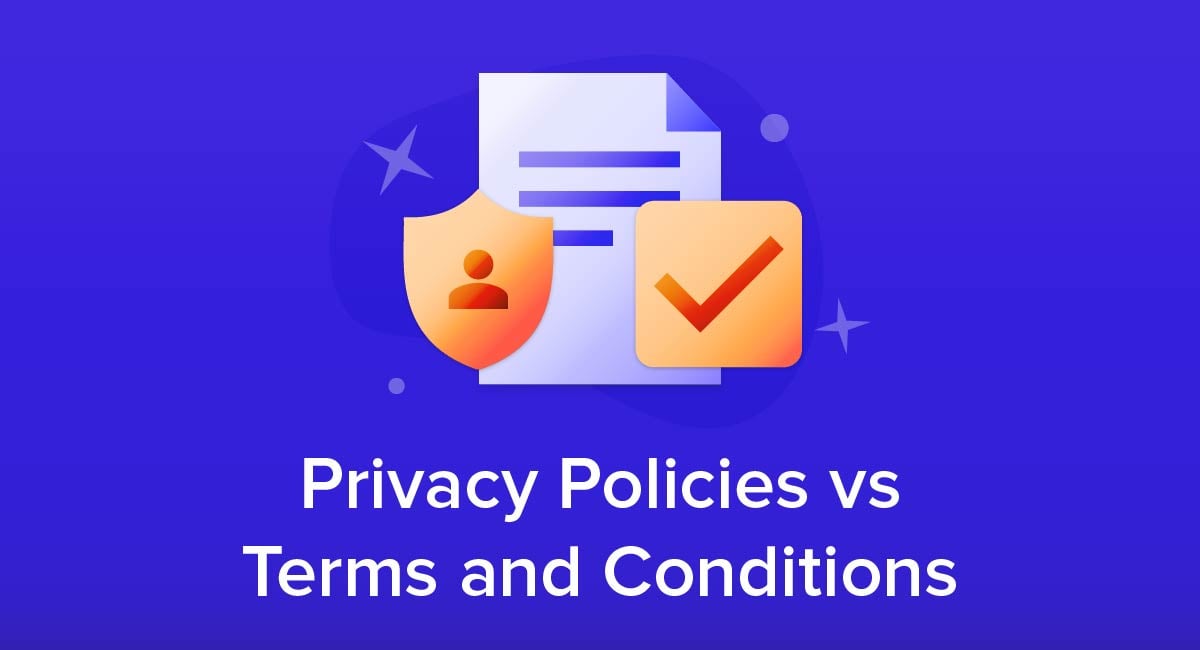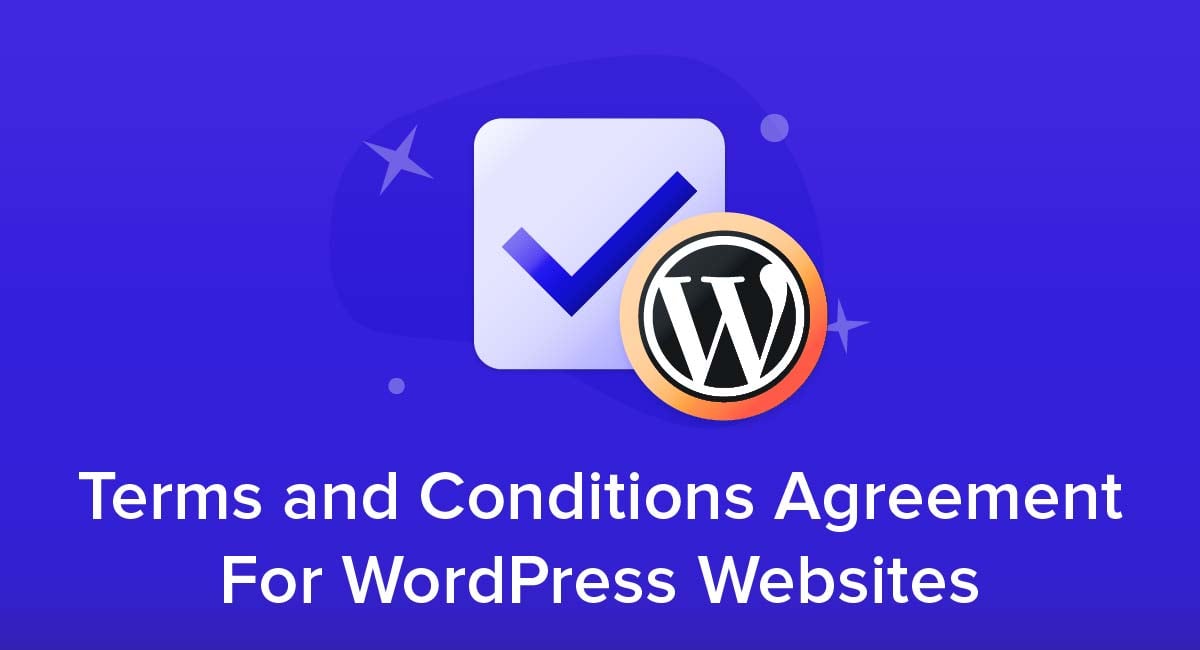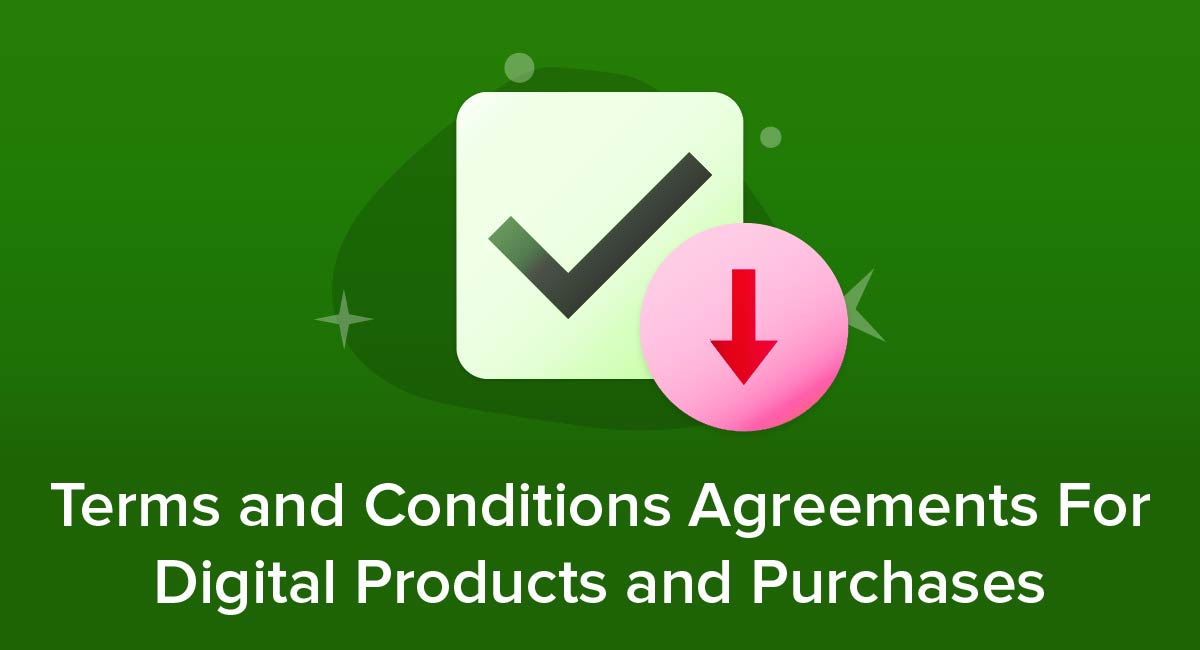
Whenever you sell something, a Terms and Conditions agreement gives clarity to you and the buyer. This is true even when your product or service is digital rather than physical.
Indeed, the agreement can address specific points of dispute or confusion that are common with digital purchases.
Here's what you need to know about Terms and Conditions agreements for digital products, what benefits they offer, and how to create your own.
Our Free Terms and Conditions Generator is created to help you generate a professionally drafted agreement that can include various terms and conditions for your site and/or app.
- Start the Free Terms and Conditions Generator from our website.
- Select platforms where your Terms and Conditions will be used (website, app or both):
- Answer a few questions about your website or app information:
- Select the country:
- Answer a few questions about your business practices:
-
Enter your email address where you'd like to receive the new Free Terms and Conditions and click "Generate":
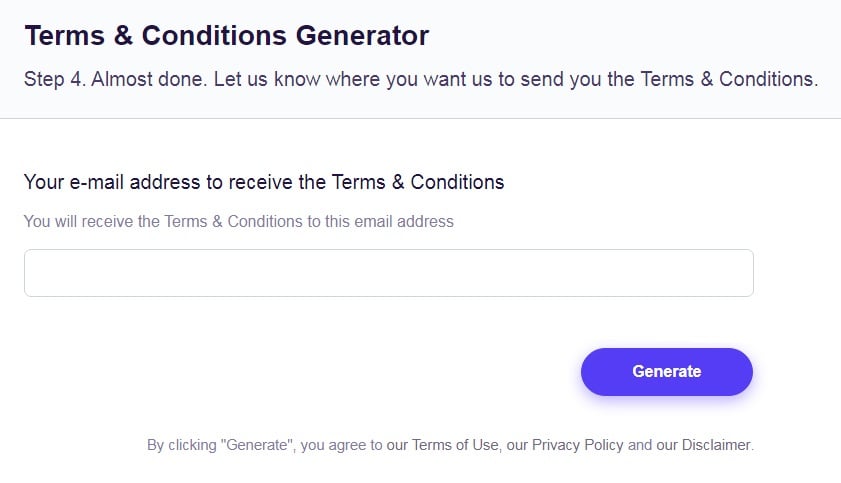
Once generated, you can copy and paste your Free Terms and Conditions agreement on your website or app or link to your hosted Free Terms and Conditions page.
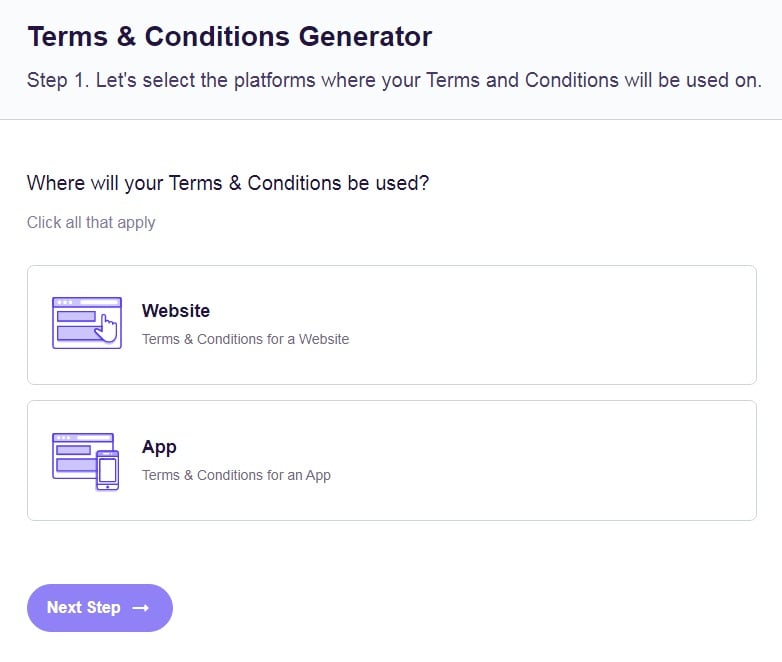
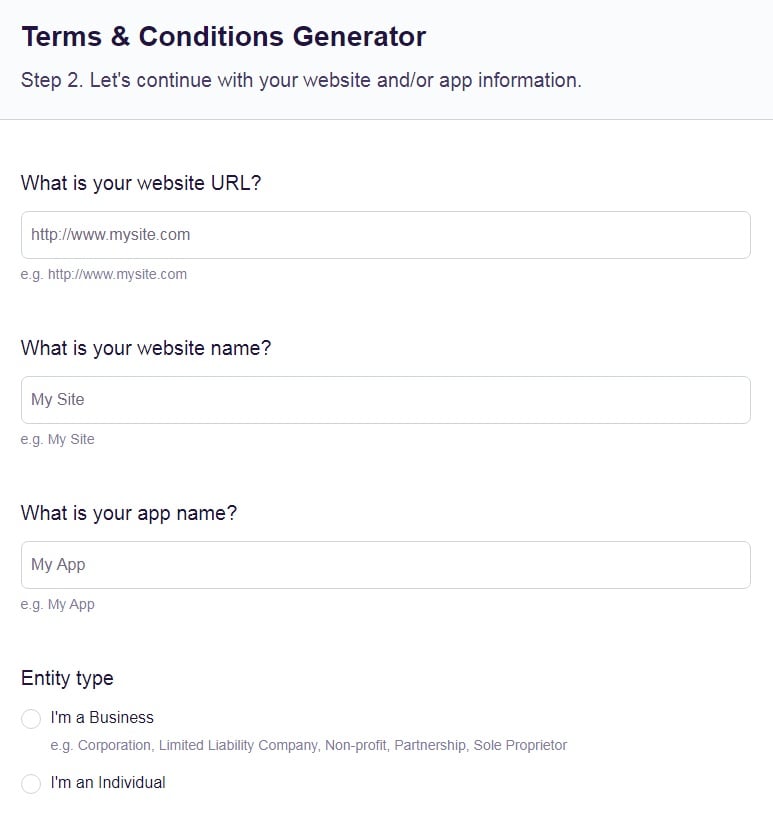
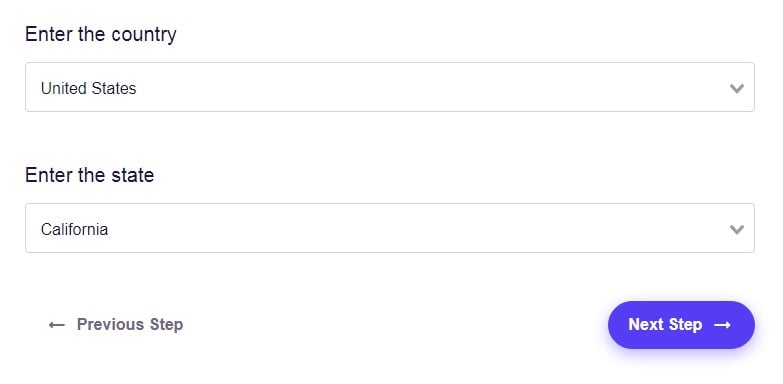
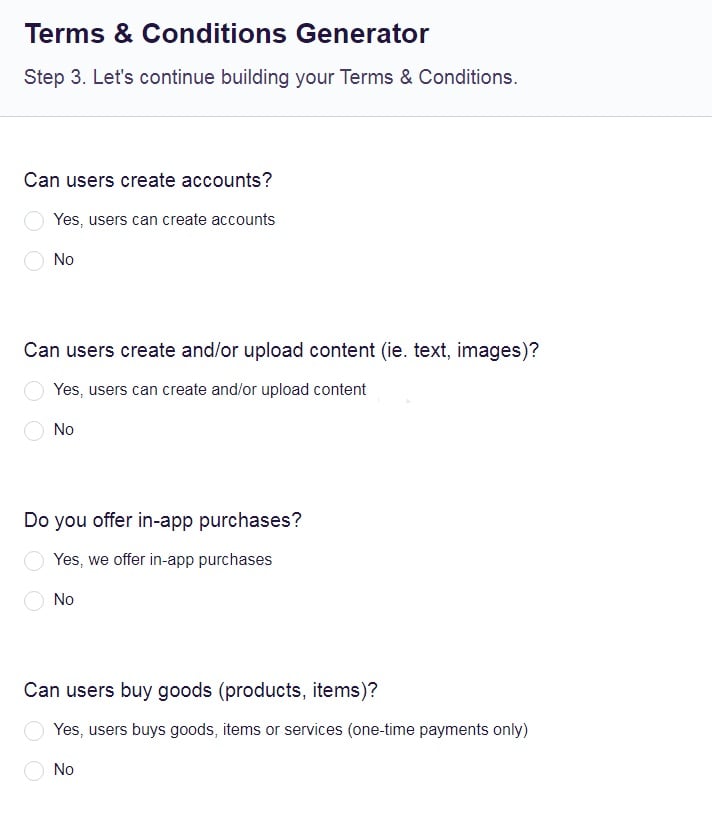
- 1. What is a Terms and Conditions Agreement?
- 2. Do I Need a Terms and Conditions Agreement for Digital Purchases?
- 3. What Should I Include in a Terms and Conditions Agreement for Digital Products and Purchases?
- 3.1. Your Identity
- 3.2. Licensing
- 3.3. Rules for Users
- 3.4. Payment Terms
- 3.5. Access to the Product
- 3.6. Legal Action
- 3.7. Warranties and Limitation of Liability
- 3.8. Termination
- 3.9. Your Privacy Policy
- 3.10. Returns and Refunds
- 4. How to Display and Get Agreement to Your Terms and Conditions Agreement for Digital Products and Purchases
- 5. Summary
What is a Terms and Conditions Agreement?
A Terms and Conditions agreement is a set of rules governing all sales you make. It works alongside other documents and information, such as specific order terms, to make up your contract with the buyer.
Usually, a Terms and Conditions agreement covers any point that will apply to every purchase, regardless of the item or price. The agreement is legally binding as part of your contract with the customer.
Do I Need a Terms and Conditions Agreement for Digital Purchases?

You don't legally need to have a Terms and Conditions agreement, but it always makes sense to have one.
Your contract with a customer includes all the terms you've agreed with them. This can incorporate multiple documents such as an order form. A Terms and Conditions agreement lets you set out more detailed terms, bringing several benefits:
- It reduces the chance of a legal dispute, which could be costly even if you win
- It increases the chance you can prove a contract term existed and be able to enforce it in court
- It shows you are a professional business and builds credibility with potential customers
While you don't legally need a Terms and Conditions agreement, you may legally have to have other agreements such as a Privacy Policy. You can often incorporate these into your Terms and Conditions agreement.
A Terms and Conditions agreement can make particular sense with digital products where you, the buyer and any data processing or file hosting could be in different countries. Customers could also be confused about how the law and your terms work differently with non-physical products. A clear agreement helps remove such confusion.
What Should I Include in a Terms and Conditions Agreement for Digital Products and Purchases?

Your Terms and Conditions agreement should cover any questions customers may have about the transaction and any points you might need to legally enforce. Most Terms and Conditions agreements should cover the following clauses:
Your Identity
List your company's name, contact details, and any registered business number. This builds credibility and avoids confusion, particularly if you use multiple brand names online or have multiple websites.
Cambridge University Press clearly states its identity and contact details:

Licensing
Unlike with physical products, customers don't usually own digital products outright. Instead, what you actually sell is the right to access content or use software. This is known as licensing.
Make clear you are licensing rather than selling your products and detail any key restrictions such as:
- The user cannot reproduce the material
- The license may only apply in particular countries or for a particular time period
- The user does not get any ownership of the product
- The license may only cover use on a certain number of devices
- The license may or may not cover commercial use of the product
Here's an example of a clause that details several key license terms:

Rules for Users
These are rules about how a customer uses your product rather than about the purchase itself. A customer must accept these rules when making the purchase and thus it forms part of your overall contract.
Key points to address include:
- Any restrictions on what the customer can do with your product
- Restrictions on sharing your product or giving access to others
- Your intellectual property rights
- The intellectual property situation with any content the user makes or shares using your product
- Bans on harassing or causing harm to other users of your products
- Bans on sharing explicit, offensive or inappropriate content using your product
Here's an example of a clause that gives an extensive list of banned actions and makes clear that following this is a binding part of the contract agreement:
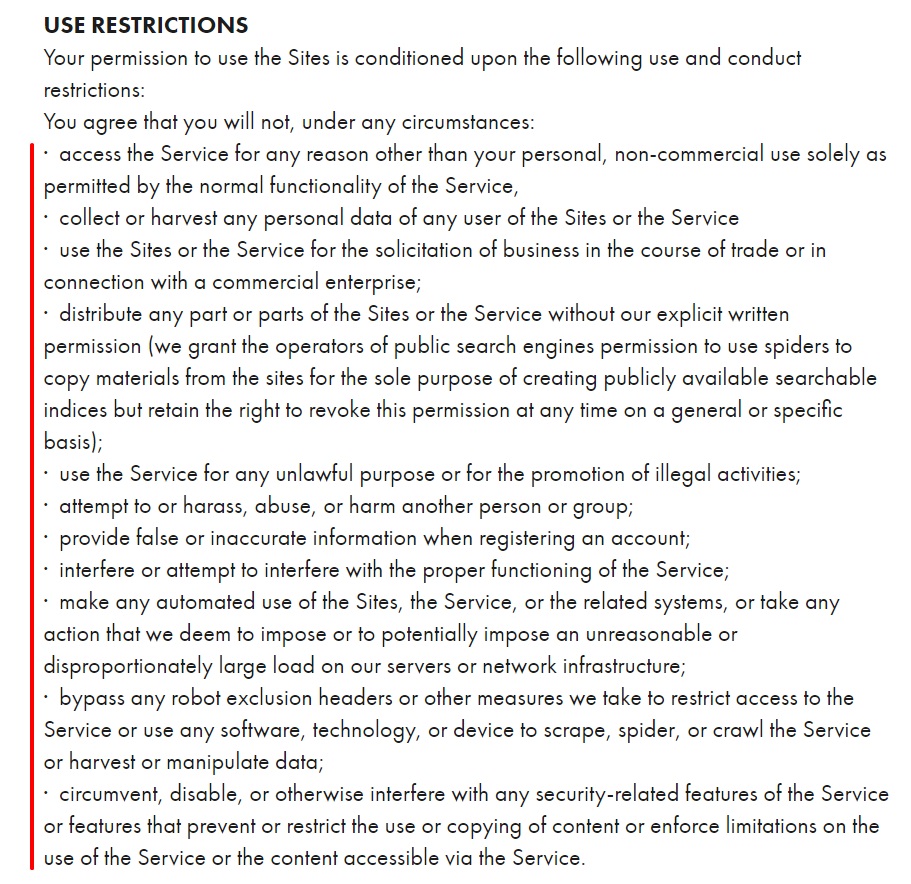
Payment Terms
This clause covers how payment works. In short, any relevant detail other than the price itself would go here.
Common points to cover include in this clause are as follows:
- What currency your prices are in, what currencies you accept and how you calculate exchange rates
- How you handle taxes and whether they are included in pricing
- What payment methods you accept and whether any carry a processing fee
- What happens if a payment fails or is reversed
- If and when the customer will need to make additional payments, for example with a digital subscription. Detail whether prices will rise and what (if any) method you will use to decide the new amount.
Here's an example of a clause that explains what happens if a payment is revoked:
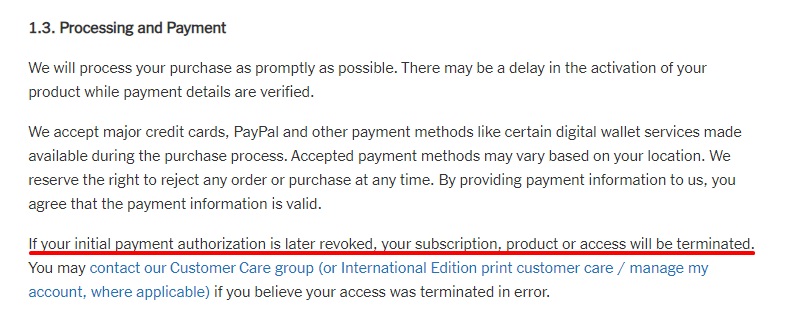
Access to the Product
This clause covers any restrictions or requirements that apply to the customer accessing the product, along with any warnings or limitations. Relevant points could include:
- The customer must have an internet connection with suitable speed and stability to access or use the product
- Picture quality could vary with streaming services
- Some products may have restricted geographical access
- Some content (for example in a streaming service) may be withdrawn
- Content is only available in specific stated formats
Netflix makes clear that picture quality will depend on connection speed among other factors:
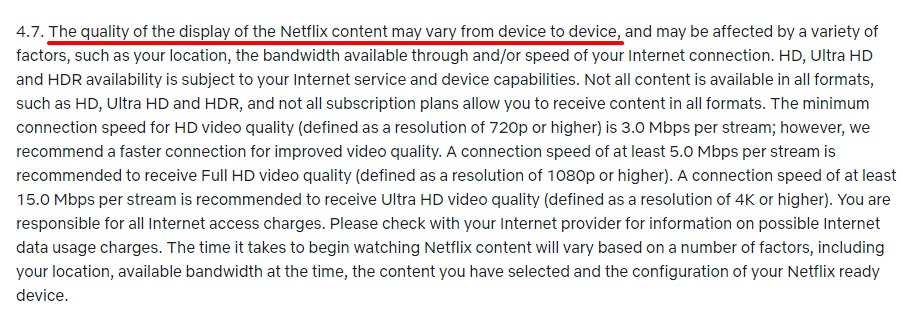
Legal Action
This clause sets out how any legal dispute must operate. The three main points to cover are:
- Jurisdiction: Which country or region's legal system governs the dispute
- Venue: Which court system must hear any case
- Resolution: Whether customers must take a case to arbitration or other dispute resolution either before, or instead of, going to court
Make sure any restrictions you apply in this clause are legally valid where you and your customers are based.
Star Stable designates Sweden as the jurisdiction and venue:
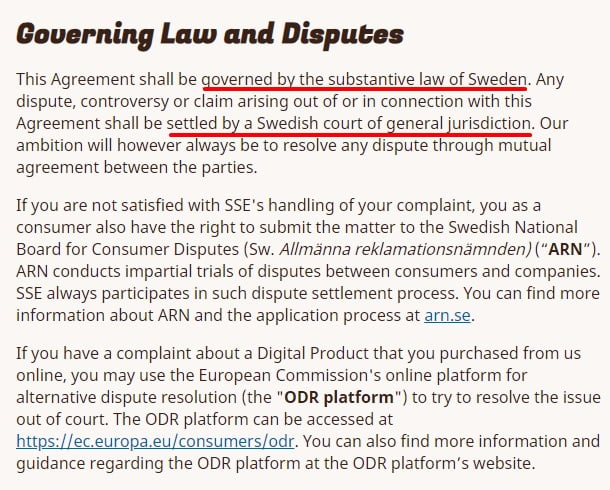
Warranties and Limitation of Liability
This clause covers two main concepts.
A warranty is a promise you make, for example that a product works in a particular way or will always be available. A warranty could be explicit, meaning you include it in your Terms and Conditions agreement or marketing. Or, it can be implied, meaning the law says it applies unless you say otherwise.
A warranty disclaimer makes clear that no warranty applies unless you have specifically listed it. This doesn't necessarily remove any legally required warranty, such as a product working as advertised. But, it can cover any assumptions or inferences that the customer might make or claim to make.
Liability is your legal responsibility for any harm caused to the customer. A limitation of liability clause restricts the responsibility you accept. This could exclude certain areas of liability, limit liability to a set financial amount, or reject any liability except for that which the law says must always apply.
Key points to consider with digital products include:
- Liability for any damage caused to a user's computer or other device
- Liability for any loss caused by the customer being unable to achieve a particular result with your product
Here's an example of how to address liability and warranties in a detailed but relatively concise clause:
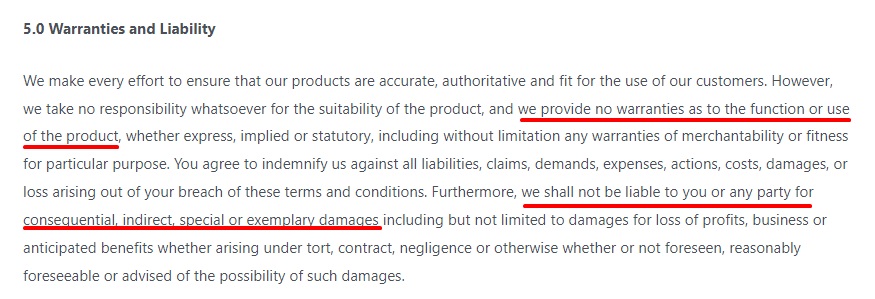
Termination
This covers the end of a legal relationship between you and the customer. With digital products it most commonly applies to ongoing subscription or membership services. It could also include cases where a customer makes a one-off payment for indefinite access to, or use of, a product.
The clause should cover:
- How and why either party could end the agreement
- Whether the agreement automatically ends after a set period or renews
- How much notice is needed to end the agreement
- What happens to the user's access to the digital product and whether they need to take (or cease) any action
- What happens to any files or other material the user has created using your product
Here's an example of a clause that makes it clear that termination for breaking the agreement means the customer gets no refund:

Your Privacy Policy
You can use your Terms agreement to link to your Privacy Policy.
Your Privacy Policy will cover information about how you use personal data about customers. And, if you collect or use any personal data you will likely be legally required to have a Privacy Policy. If not, disclosing the information can still build trust and authority with potential customers.
Specific requirements vary between laws, but you often need to disclose the following in your Privacy Policy:
- What personal data you collect and how you collect it
- What you use it for
- Whether you share it with third parties (including selling it)
- How customers can check what data you hold and what rights they have to limit your use
- How long you keep the data or what criteria you use for deciding when to delete it
The British Council includes its privacy information as a clause with the Terms and Conditions agreement. The use of drop-down sections makes it viable to include detailed information this way:
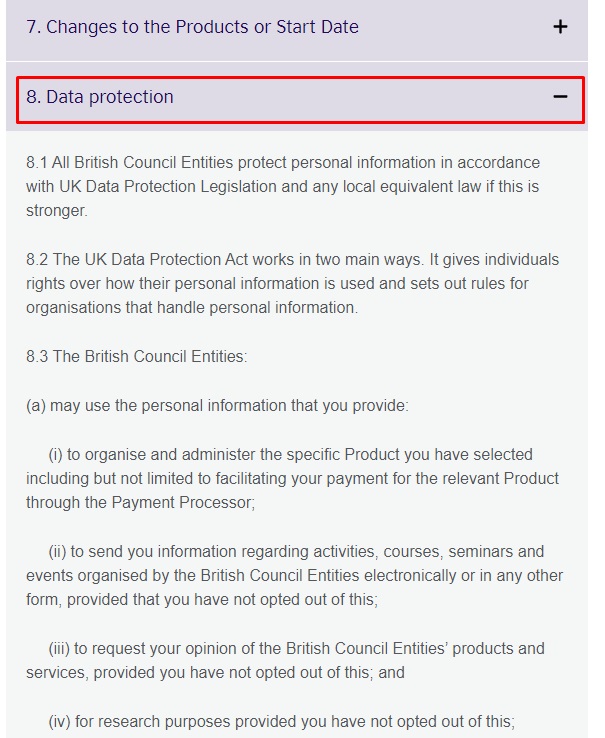
Returns and Refunds
This covers the following key points, which usually refer to cases when customers choose to return a product rather than it being faulty or not working as advertised:
- Whether you accept returns
- What limits or restrictions you impose
- Whether any fees apply
- Whether you refund money or issue a credit note or voucher for other products
- How and when you'll refund money
With digital products you may need to add detail on:
- Whether you have any limits on use before requesting a refund. This could mean returns must be before opening a document, before using a product a certain number of times, or before watching a certain amount of content.
- The practical effects of "returning" the product, for example losing access to content or losing any data created used the product.
Check applicable laws before writing your returns information. In some places, such as Europe, you must offer returns for a certain period when you are selling products the user cannot physically see before purchasing. This includes most digital products.
Unless your returns information is particularly lengthy, or a law requires it to be a separate policy document, you can usually incorporate it into your Terms and Conditions agreement.
Even if you do have a separate Return and Refund Policy, you can link it to your Terms agreement for easy cross-referencing.
GetWrestle sets out its general principle on returns plus the exceptions required by law:
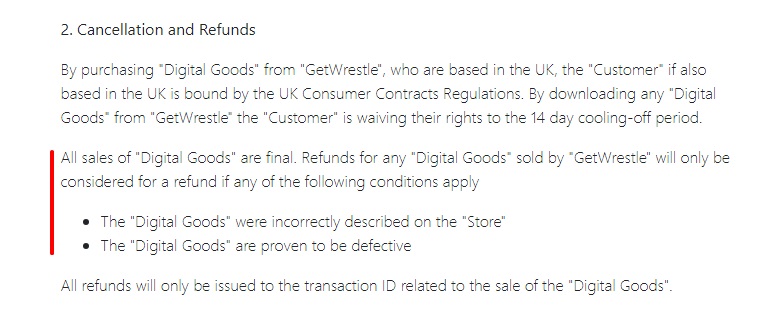
How to Display and Get Agreement to Your Terms and Conditions Agreement for Digital Products and Purchases
As part of your overall contract, you may need to prove customers had a fair chance to read your Terms and Conditions Agreement before making a purchase. To do this, you can show it in several locations:
- On your website, either on a dedicated page or in a separate legal section. For best visibility, clearly link to this page or section in your navigation such as a footer menu, displayed on every page.
- At the point a user is about to confirm a purchase such as an online order screen
- Within the digital product itself
Always make sure the customer has a chance to see it before purchasing.
Zenplates clearly links to its Terms and Conditions agreement from a footer menu:
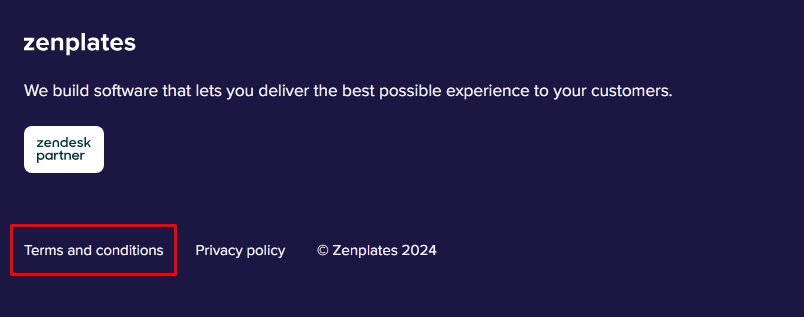
For added legal certainty, require the customer to confirm they have read and agree to your Terms and Conditions agreement before they can complete a purchase.
The only way to be certain of this is to require a positive, unambiguous signal such as clicking an "I Agree" checkbox or selecting a toggle before proceeding with the order process. Do not pre-tick a checkbox or set a toggle to show agreement by default.
Elsevier requires customers to tick a box confirming they accept the Terms and Conditions agreement. It also links to the agreement:
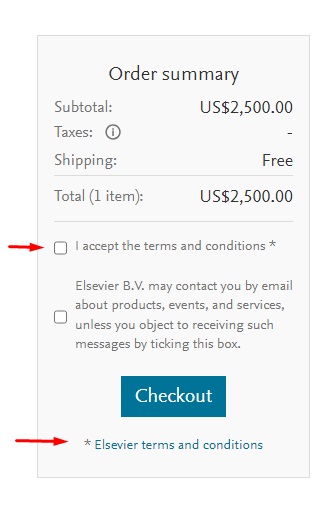
Summary
A Terms and Conditions agreement covers all your sales. It combines with other information such as the details of an individual order to form your contract with a customer. Digital products can require additional information.
Having a Terms and Conditions agreement isn't usually a legal requirement but can significantly improve your legal position.
A Terms and Conditions agreement should address points including your identity, how software licensing works, payment terms, digital product access, legal action, liability and warranties, and termination.
Make sure customers have a fair opportunity to see your Terms and Conditions agreement both before and after a purchase. For added certainty, require a positive indication that they accept the agreement, such as a checkbox next to an "I Agree" statement.
